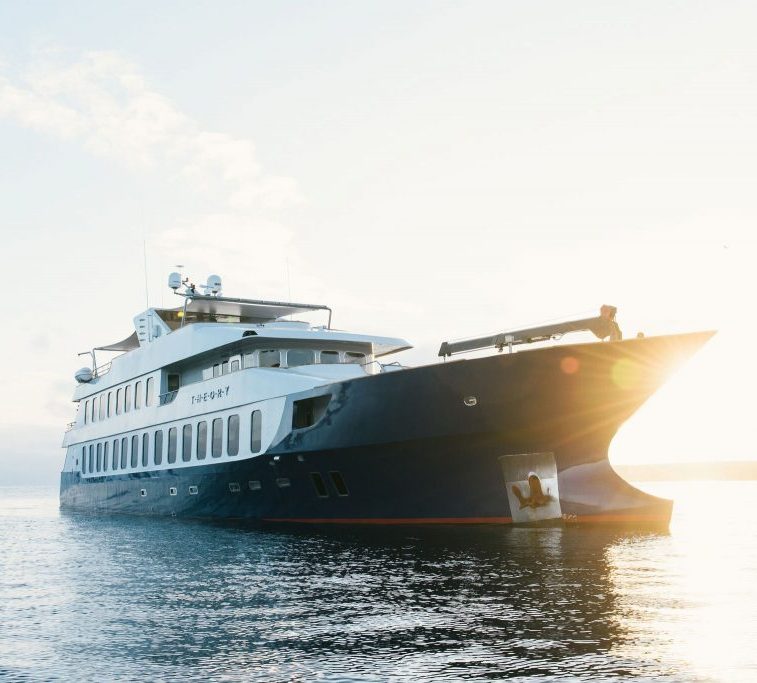AUTHOR Daniel Andino
Unravelling myths about which boat is best for sea-sickness. Should you go for the catamaran or mono-hull? Larger vessel or yacht?

AUTHOR Daniel Andino
Unravelling myths about which boat is best for sea-sickness. Should you go for the catamaran or mono-hull? Larger vessel or yacht?
One question often asked before embarking on a cruise is whether passengers are likely to get seasick, and what type of boats are most likely to cause it – catamarans vs more traditional monohulls, or larger vessels vs smaller ones.
Whilst reports of seasickness aboard our yachts are rare, we would like to outline a few of the pros and cons of various yachts and give some tips for avoiding seasickness whilst on board.
Small can still be stable
It’s worth noting that larger yachts are inherently more stable than smaller ones due to their greater weight, lower center of gravity and the fact that they are less affected by wave motion, so the debate over stability is largely related to smaller yachts designed for families or small groups – not so relevant for ships such as ours designed for 20 guests as well as the crew, guides and staff.
Having said that, our yachts have a maximum of 20 guests, ensuring the highest guide-to-guest ratio in the Galapagos and the best chance to enjoy the pristine wilderness the archipelago has to offer. After all, there are many benefits to not sharing an excursion with 50-100 other guests all disembarking from a cruise ship.
Catamarans vs Monohulls
It is commonly believed that catamarans – multi-hulled vessels featuring two parallel hulls of equal size – tend to be more stable. The wider stance and two-hulled design are commonly believed to reduce roll compared to a monohull model, and catamarans tend not to rock gently at anchor in the way monohulls can.
However, monohulls sit lower in the water with more of the boat under the water level. They are designed to slice through the water – it is often said that monohulls work with the elements instead of trying to fight them. In addition, catamaran design has other drawbacks. When the raised underside connecting the two hulls is hit by waves, the sound and impact can reverberate around the vessel in an annoying “slap” or drumming noise – not ideal when you’re trying to sleep or relax after a long day of excursions.
Romance never dies
And given that the traditional design of a monohull gives it that more attractive, graceful and romantic look, whilst allowing for more spacious, roomy interiors, it’s no surprise that our Ecoventura fleet are monohulls and we’re proud of it! They are also smaller than the other Galapagos cruise ships, bringing its own set of advantages, as noted recently by US travel writer Kimberly Bloom.

Regardless of any personal views on the stability of a catamaran vs a monohull, or indeed the benefits of a smaller or a larger yacht to stave off seasickness, the good news is that our ships have all been specifically designed with stability in mind (and fuel efficiency, of course), and reports of seasickness amongst our guests are exceedingly rare.
The Origin and Theory have curved bows designed to cut through waves, reduce bow to stern movement and improve stability. With a low center of gravity and fixed stabilizers known as bilge keels, roll (ie port to starboard movement) is kept to a minimum ensuring enhanced comfort and safety for all on board.

Top Tips
Despite all this, if you happen to find yourself feeling a bit queasy, here are some useful tips to keep in mind:

We wish you a wonderful trip with us. Please don’t hesitate to reach out to our team should you have any further questions: info@galapagosnetwork.com